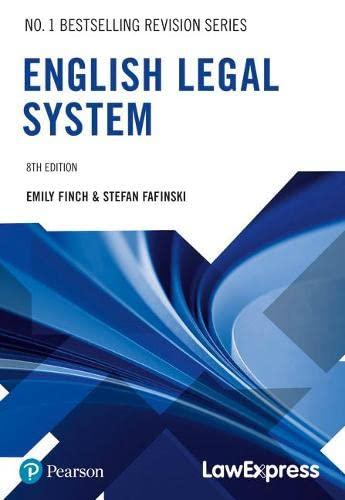Question
ASSIGNMENT Part 2: CASE BRIEF = Use the case brief format outlined below (COMMENTS). Separate the sections and use bolded headings for each section. Single
ASSIGNMENT Part 2: CASE BRIEF = Use the case brief format outlined below (COMMENTS). "Separate the sections and use bolded headings for each section. Single spaced, 12 pt. font, Times NewRoman font. The entire Case Brief for this case should not be morethan 1 pages in length." The Case you are briefing is Jensen v. Sheriff, White Pine County, 89 Nev. 123 (1973), and you canlocate it by Googling either the case name or the citation. ""A number of good websites for accessing the case will be available, for instance, Justia.com.,casemine.com, and Oyez.org."" Do not just read a commentary on the case, --you need to have the actual case opinion to read. Accessing it online will not usually give you the Headnotes the way a Reporter or Westlaw versionwould, but you can get the full text of the actual case. Guidelines: a. The FACT section should not be more than 1/3 of the whole. Utilize and summarize thekey facts, including a brief procedural history of how this case wound its way through thelower Courts and what were the decisions there. b. The ISSUE section should only be 1 sentence in the form of a question and containingthe 3 components discussed above. c. "The RULE section can be bullet points listing cases and statutes (remember the Rules and Steps for evaluating the importance of authority discussed in the first lecture) with anexplanatory phrase regarding what it is about. If it is a case, include the citation material. Only list the main cases that the Court used and discussed in its analysis. You do not needto list every single case that is in a string cite, that the Court simply mentioned in passing or to which it referred. If the Court did not discuss it, do not include it." d. The ANALYSIS section should be your longest sectionapproximately 2/3 of the whole. This is usually the hardest section to write because you are reporting on how the Courtapplied statutes and cases to the facts of the case. It is explaining the Court's reasoningnot merely listing quotes from the cases. You are showing how the Court matched law tothe facts to reach their decision. e. The CONCLUSION section is very brief---only 1-2 sentences, and it should basicallyanswer the question you posed in the ISSUE section, to bring things full circle. Include the"Holding" as to whether the Court affirmed or reversed the lower court's decision. A goodway to start this section is with the phrase "Based upon the foregoing, the Court.."
Step by Step Solution
There are 3 Steps involved in it
Step: 1

Get Instant Access to Expert-Tailored Solutions
See step-by-step solutions with expert insights and AI powered tools for academic success
Step: 2

Step: 3

Ace Your Homework with AI
Get the answers you need in no time with our AI-driven, step-by-step assistance
Get Started


